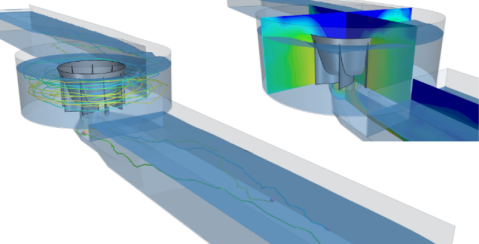The aim of the project is to reduce experiments with live wild fish to evaluate the damage to fish during the passage of turbines and other downstream corridors at power plants and other hydraulic structures and to replace them completely in the long term with a kit of experimental and numerical replacement systems.
Simulation of a small hydropower plant to this end, the project is conducting a variety of studies and developing methods:

- Behavioral studies provide the reactions of fish during a passage of the structures and are incorporated into the numerical models
- studies on collisions and impact events and the associated structural-mechanical response of fish bodies based on flexible surrogates allow the development of novel sensors and a transfer of sensor data into damage predictions
- numerical surrogate models provide high-resolution, spatial and temporal data on the flow in conjunction with fish behavior models.
- robotic surrogate fish are equipped with specialized pressure and acceleration sensors to evaluate and set physical factors and thresholds for hydropower-induced damage and mortality caused by descent through turbines and hydraulic structures.
- Non-invasive mini-sensors (backpack sensors) that can be applied to the fish provide enhanced data and insights per fish and allow a significant reduction in experimental animal numbers
 Manufacturing study of a prototype of the robotic fish & river perch with backpack sensor.
Manufacturing study of a prototype of the robotic fish & river perch with backpack sensor.